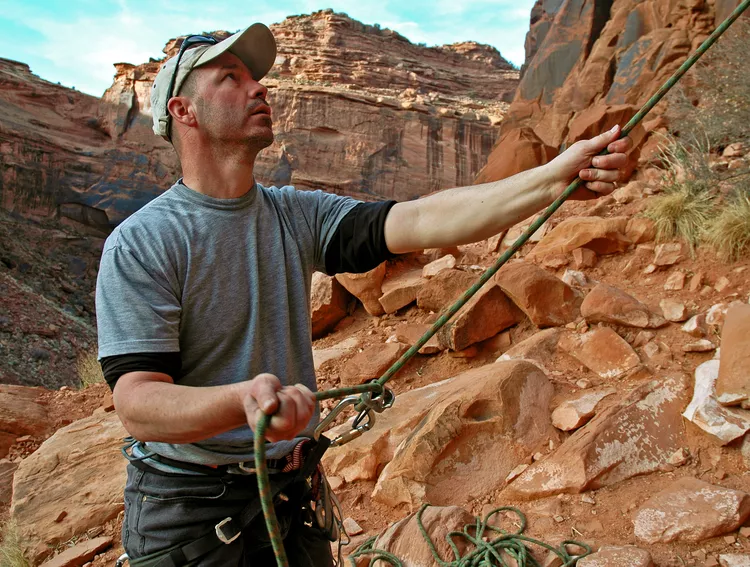1. Understanding the Command: On Belay
2. Accepted Protocol and Commands
A Basic Command Before Rock Climbing
In the sport of rock climbing, “on belay” is a critical climbing command utilized by a rope climbing team at the base of a route, as well as at both the beginning and end of a pitch higher up the cliff. The term applies to rappelling as well, which involves using ropes to descend a steep cliff face through a series of hops or jumps. “Belaying” denotes various techniques employed to maintain tension on a climbing rope, ensuring that a climber does not fall too far in the event of an accident. The command “on belay” is vocalized by your climbing partner, signaling their readiness to keep the rope taut as you ascend, thus safeguarding your climbing experience.
In a traditional climbing setup, your belayer, likely positioned next to you at the base of your route’s initial pitch, signals they are prepared and that it is safe to commence climbing by clearly announcing “on belay.” This indicates that the belayer has uncoiled the rope, tied themselves to an anchor—such as a tree or cam—and is securely holding the climbing rope tied to your harness with a figure-8 follow-through knot fed through their belay device. In instances of rappelling, the belayer may also be stationed at the summit, especially when it involves a one-way descent instead of a return to the ground after a successful climb.
Accepted Protocol
Here is the usual set of commands practiced by a climbing team, whether starting from the base of the cliff, a belay ledge halfway up a route, or by a leader providing belay to a second climber from above. This series of commands is applicable whether you’re engaged in big wall climbing, sport climbing, or toprope climbing. It’s essential to remember that when you inform your belayer that they are “on belay,” you take on the responsibility of being an attentive belayer. Thus, always regard belaying as a serious responsibility. Avoid distractions, and maintain focus on the climber. A standard exchange between the climber and belayer may typically unfold as follows:
Climber: “On belay?” (Are you ready to belay me?)
Belayer: “Belay on.” (Slack is gone and I’m ready.)
Climber: “Climbing.” (I’m going to climb now.)
Belayer: “Climb on.” (I’m ready for you to climb.)
Climber: “Slack!” (Pay out a little rope.)
Belayer: (Pay out rope and pause to see if climber asks again.)
Climber: “Up rope.” (Pull in rope slack.)
Belayer: (Pull in slack and pause to see if climber asks again.)
Climber: “Tension.” (I want to rest by hanging on the rope now.)
Belayer: (Remove all slack and hold tight.) “Gotcha.”
Climber: “Ready to lower.” (I’m done climbing.)
Belayer: (Reposition both hands to brake.) “Lowering.”
Climber: “Off belay.” (I’m standing securely on the ground.)
Belayer: “Belay off.” (I’ve stopped belaying you.)
It’s crucial for the belayer to inform the lead climber when they are prepared to belay. Climbers displaying impatience often ask, “Are you on belay?” or “On belay?” However, it’s important to exhibit patience—allow your belayer the necessary time to properly prepare and signal that they are on belay and that it’s safe for you to climb. Rushing your belayer can lead to dangerous situations.





